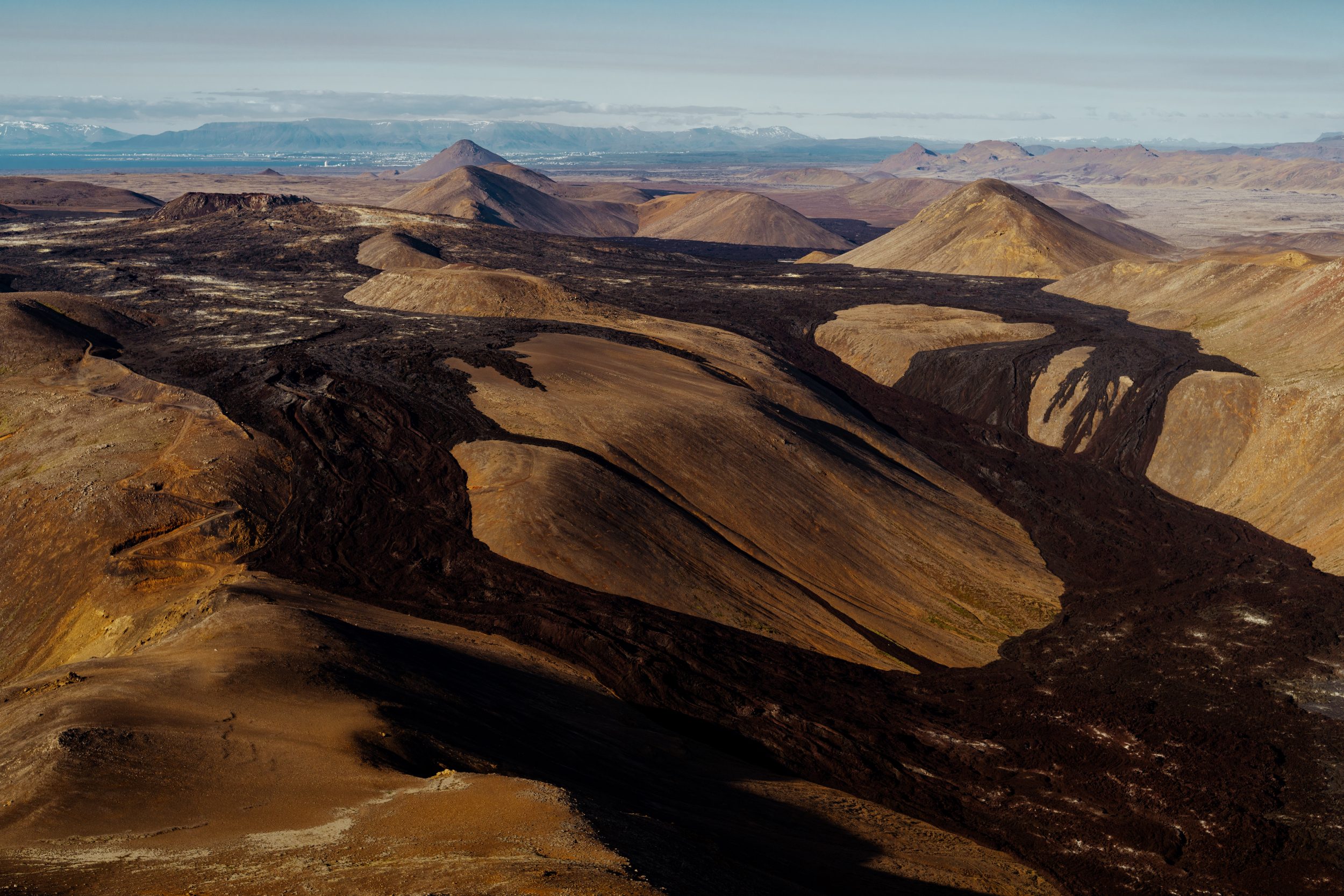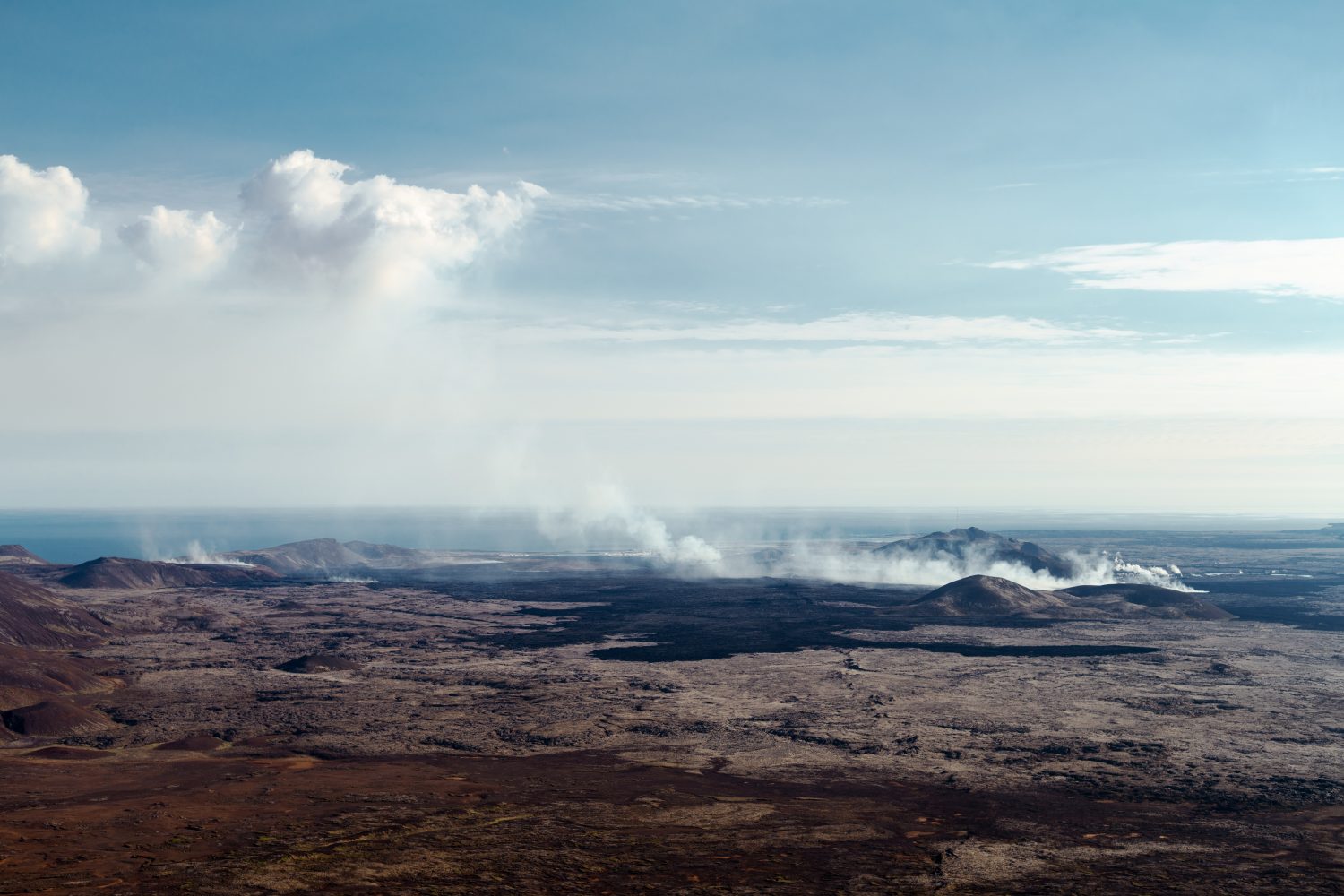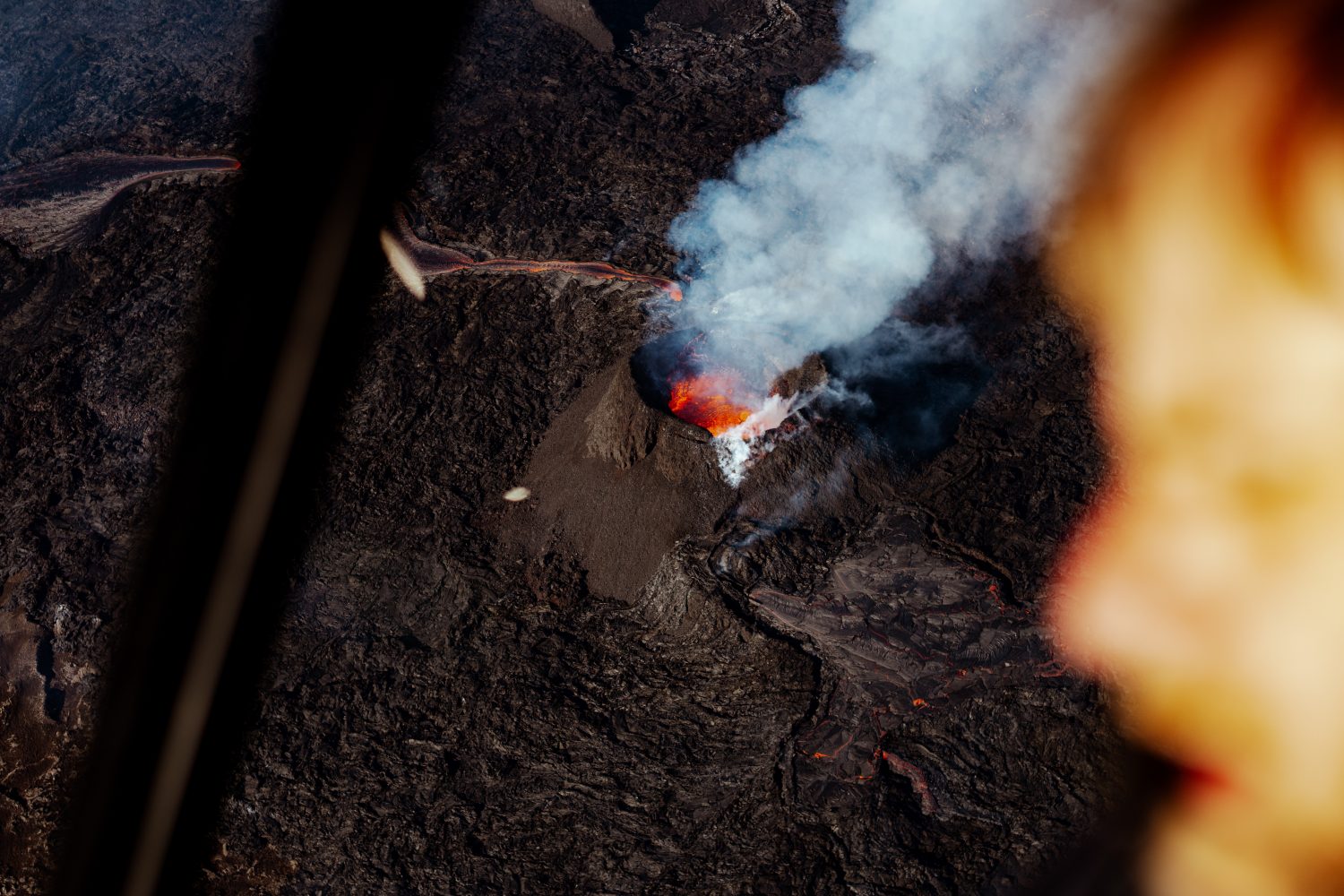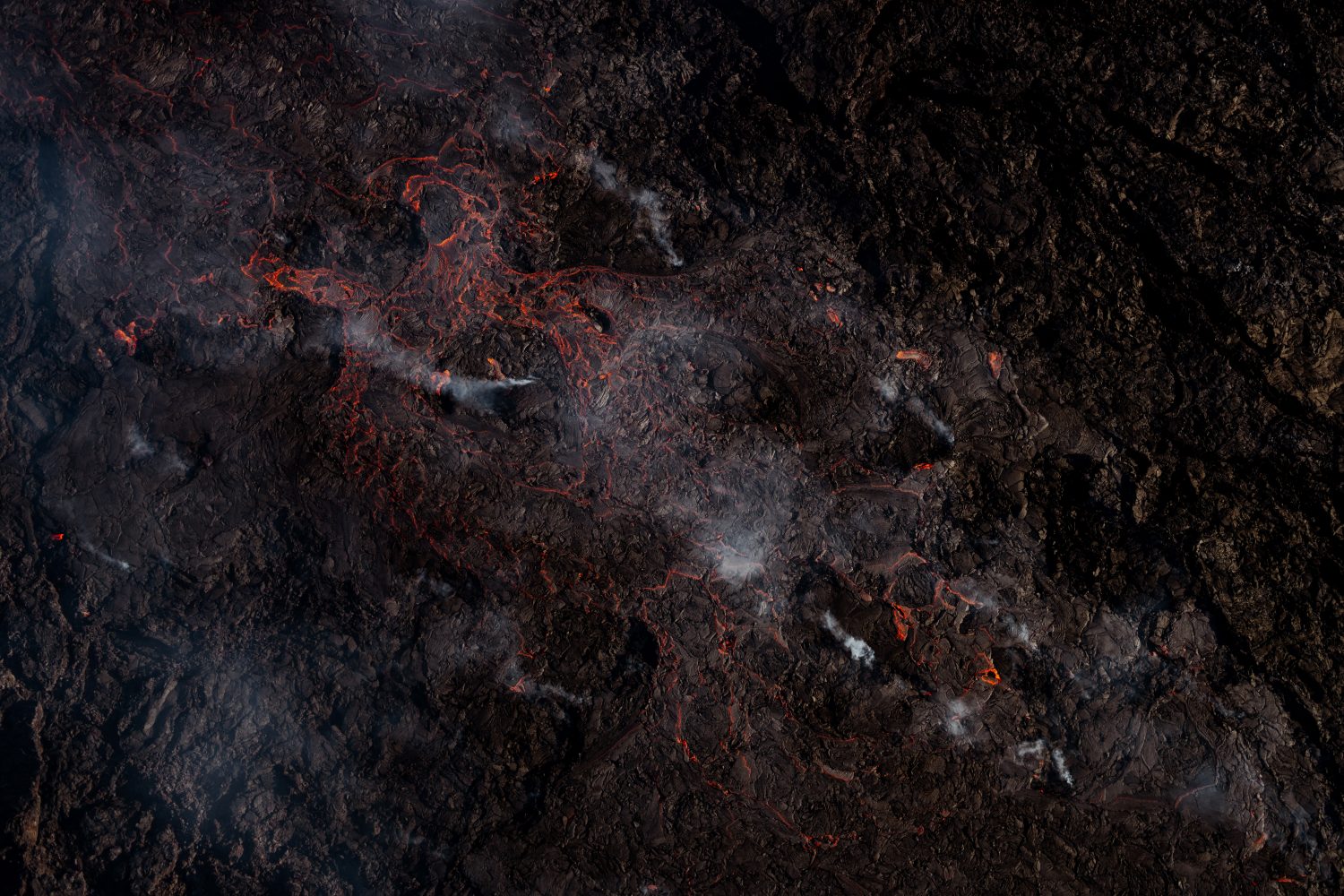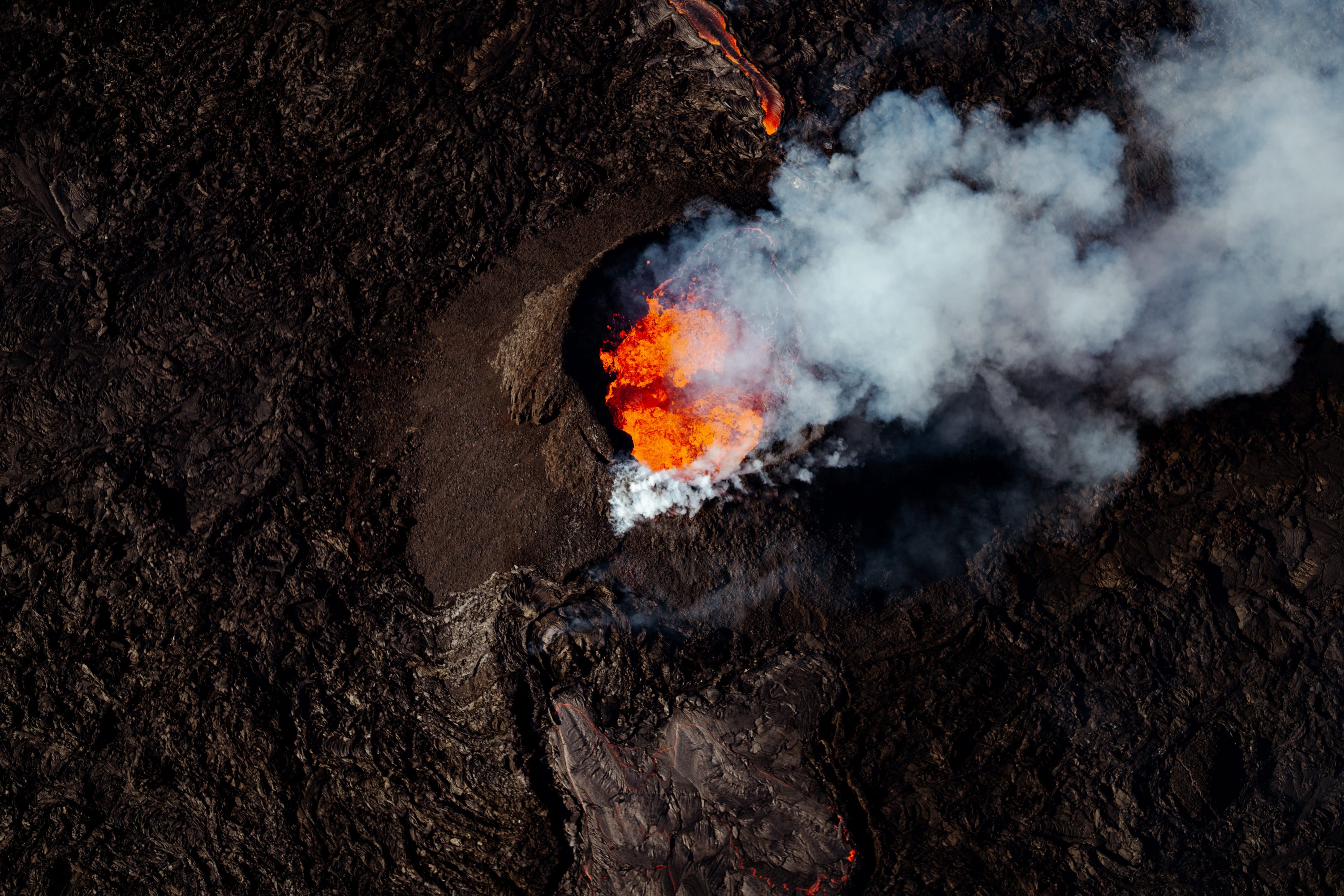
Sundhnúkur, Iceland’s New Volcano
The helicopter banks gently around the Sýlingarfell mountain, and the landscape beneath us transforms into a spectacle of raw, elemental power. Before us sprawls the Svartsengi volcano system with Sundhnúkur, not a towering peak but a fissure in the earth, a jagged wound from which molten lava spews forth.
The lava flow creeps dangerously close to the Blue Lagoon and Svartsengi geothermal power plant. Since the eruption, initially a mesmerizing spectacle, the lave flow poses a direct threat to these iconic Icelandic landmarks.
The Blue Lagoon, a world-renowned geothermal spa, draws tourists with its milky blue waters. The creeping lava, however, has threatens to encroach upon the lagoon, potentially altering its delicate chemical balance or worse, engulfing it entirely. This scenario would not only devastate the local tourism industry but also erase a symbol of Iceland’s unique geothermal landscape.
Equally concerning is the looming threat to the Svartsengi geothermal power plant, a critical source of electricity for the region. The plant harnesses the Earth’s heat to provide power for homes and businesses, making it essential to the local infrastructure. Should the lava reach the plant, the consequences would be dire, potentially disrupting power supply and causing more economic damage
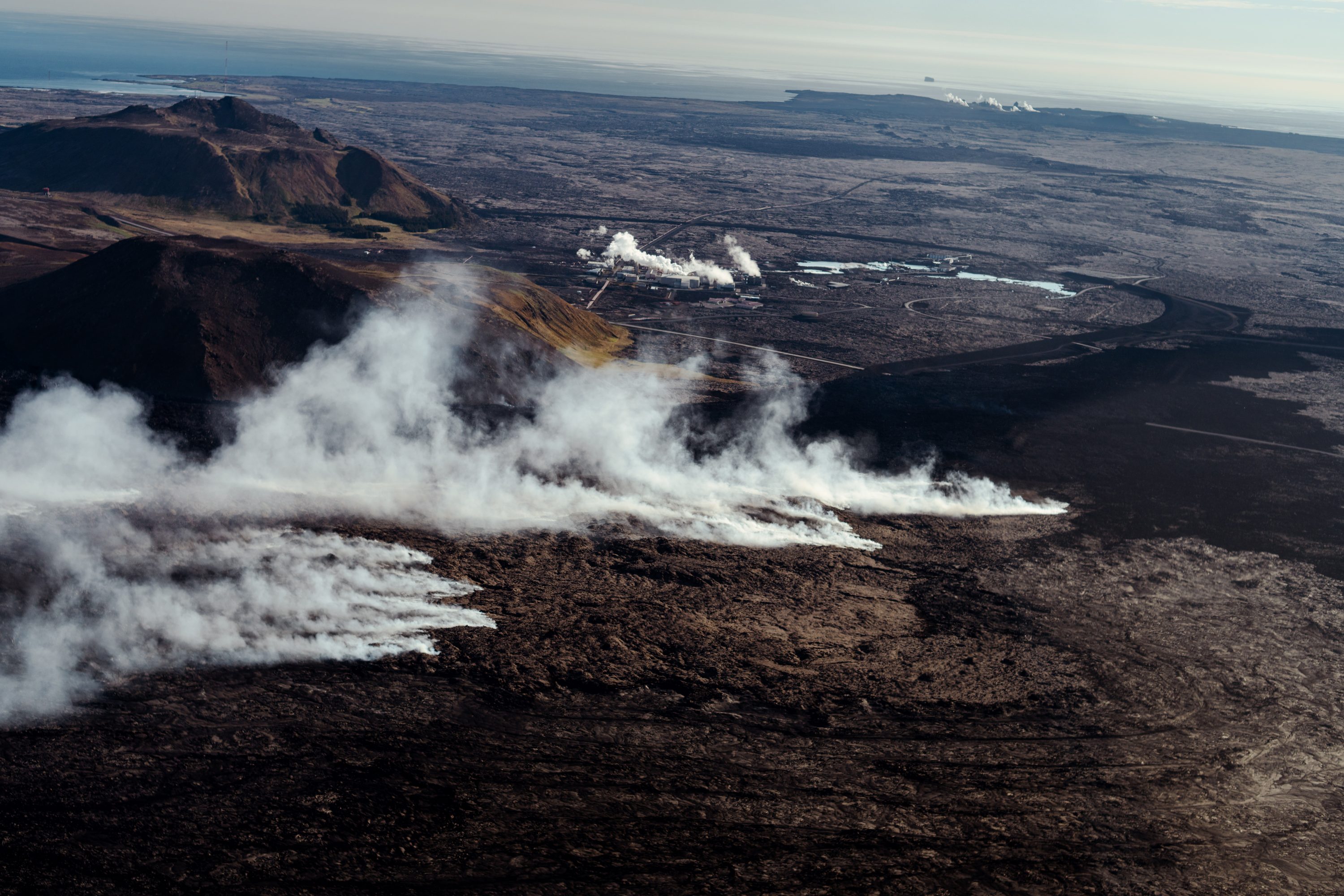
The nearby Fagradalsfjall is a shield volcano located on the Reykjanes Peninsula in southwestern Iceland. It’s part of a larger volcanic system that had been dormant for nearly 800 years before reawakening with a fissure eruption in March 2021. The eruption continued sporadically for several months, creating new lava fields and craters.
